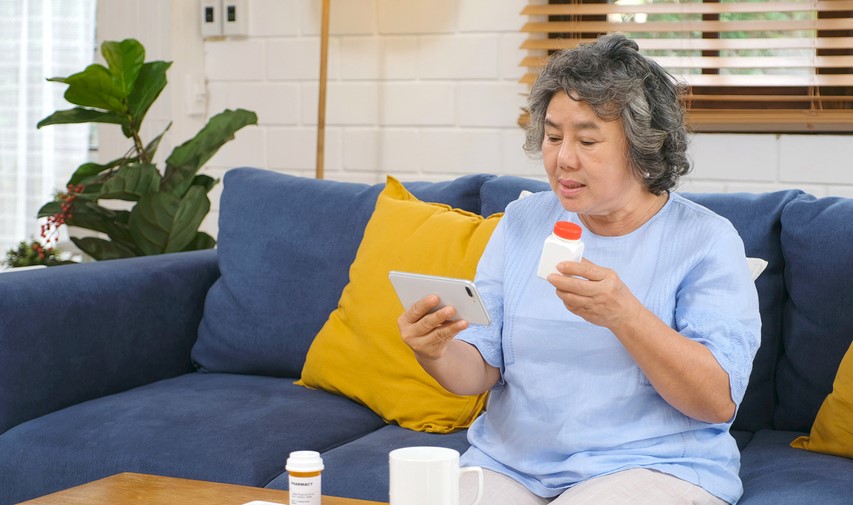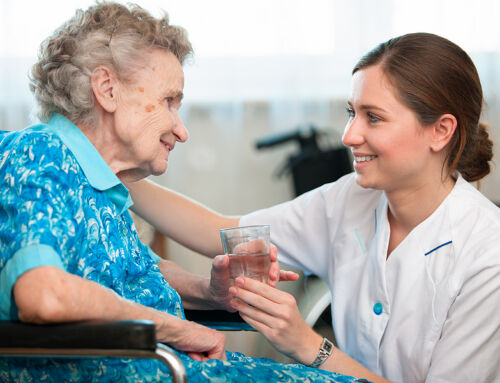Over the summer, I wrote about the challenges that can come with long-distance caregiving, defined as living more than an hour from the care recipient. While serving as a caregiver for a loved one under any circumstances can present a number of challenges, long-distance caregiving has its own unique set of difficulties. Long-distance caregivers have the highest annual expenses, averaging around $12,000 each year, according to AARP research. Long-distance caregivers also are more likely to report emotional distress than those who live closer to their care recipient.
Yes, video chat applications like Skype or Facetime can help connect you to your loved one across the miles, but thanks to a number of other technological advancements we have seen in the last decade, aging in place is becoming simpler and safer for seniors, and long-distance caregiving can be less of a burden for their loved ones. As a result, many of today’s seniors are embracing these high-tech “assistive technology” (AT) solutions.
>> Related: The Challenge of Long-Distance Caregiving
Web-enabled home sensor systems
So-called “smart home” technology has made exponential advancements in just the past few years. Not only can it do things like turn on your lights and adjust the thermostat remotely, there are several capabilities that are extremely useful to long-distance caregivers, allowing their care recipient to maintain more independence for longer.
Motion sensors can help a long-distance caregiver know when their loved one gets up in the morning, that they are moving about their home as expected, and when they go to bed. Door sensors can alert the caregiver when the senior leaves and returns home. A loved one can even be alerted when the senior opens the refrigerator or microwave, to put the long-distance caregiver’s mind at ease that the senior is eating meals.
Personal emergency response systems (PERSs)
Wearable SOS devices also have made tremendous strides recently. One example of today’s PERSs is a wearable Bluetooth sensor that tracks a person’s movement. These come in a belt clip, watch-type device, or a pendant style. If the sensor picks up an unusual pattern, or senses no movement at all for a certain period of time, a long-distance caregiver one can be alerted to check on the senior. Others contain GPS tracking technology enabling loved ones to locate seniors who may wander or tend to get lost.
These Bluetooth devices also come in monitored versions, providing the additional capability to summon emergency services automatically if a fall occurs or even if a person loses consciousness.
This type of PERS equipment is increasingly becoming standard issue in the senior living industry with many continuing care retirement communities (CCRCs or life plan communities) providing these emergency alert devices even to independent living residents.
Medication management
Medication adherence (that is to say, actually taking the medicines your doctor has prescribed) can be a challenge at any age, but it’s an especially common issue for seniors who may have trouble remembering when and how to take prescriptions that are critical to their health. Luckily, there are several high-tech solutions to this problem that can reduce a long-distance caregiver’s burden.
Smartphone medication reminder applications act like an alarm to remind the senior to take their medicine at the prescribed time. There are number of these apps available, which have various features including the ability for a long-distance caregiver to manage and monitor the reminders.
Another option is a countertop automated medication management device. These are typically rentable and include a monthly monitoring/dispensary fee. The senior or caregiver loads the device with several days’ worth of medicine doses. The medication schedule is provided to the monitoring company, which then remotely dispenses the drug(s) on the correct schedule.
When it is time to take the medicine, the device will alert the senior with an audio and visual prompt and dispense the proper dose of drug(s). The alert will continue for a designated period of time until the senior pushes a button to indicate they have taken the medication. If they fail to push the button, the system alerts the monitoring company and/or a caregiver.
>> Related: The CCRC of the Future: Technology
A preponderance of benefits from technology
There are many other “smart” devices that can help seniors who are beginning to experience some age-related health or memory issues. For example, one gadget can turn off the stove if left on too long, and another can prevent a tub or sink overflow by automatically shutting off the faucet after a certain amount of time. In addition to the safety advantages, these high-tech devices have the added benefit of helping seniors maintain more independence for longer.
It might seem a little like “big brother” is watching to some people, and privacy concerns are valid when it comes to these smart sensors and monitoring devices. But such technology tools are among the options families can discuss with an aging loved one as a way to increase safety and reduce caregiver burden, especially for long-distance caregivers. It may be that both the senior and their caregiver agree that the pros outweigh the cons.

FREE Detailed Profile Reports on CCRCs/Life Plan Communities
Search Communities






